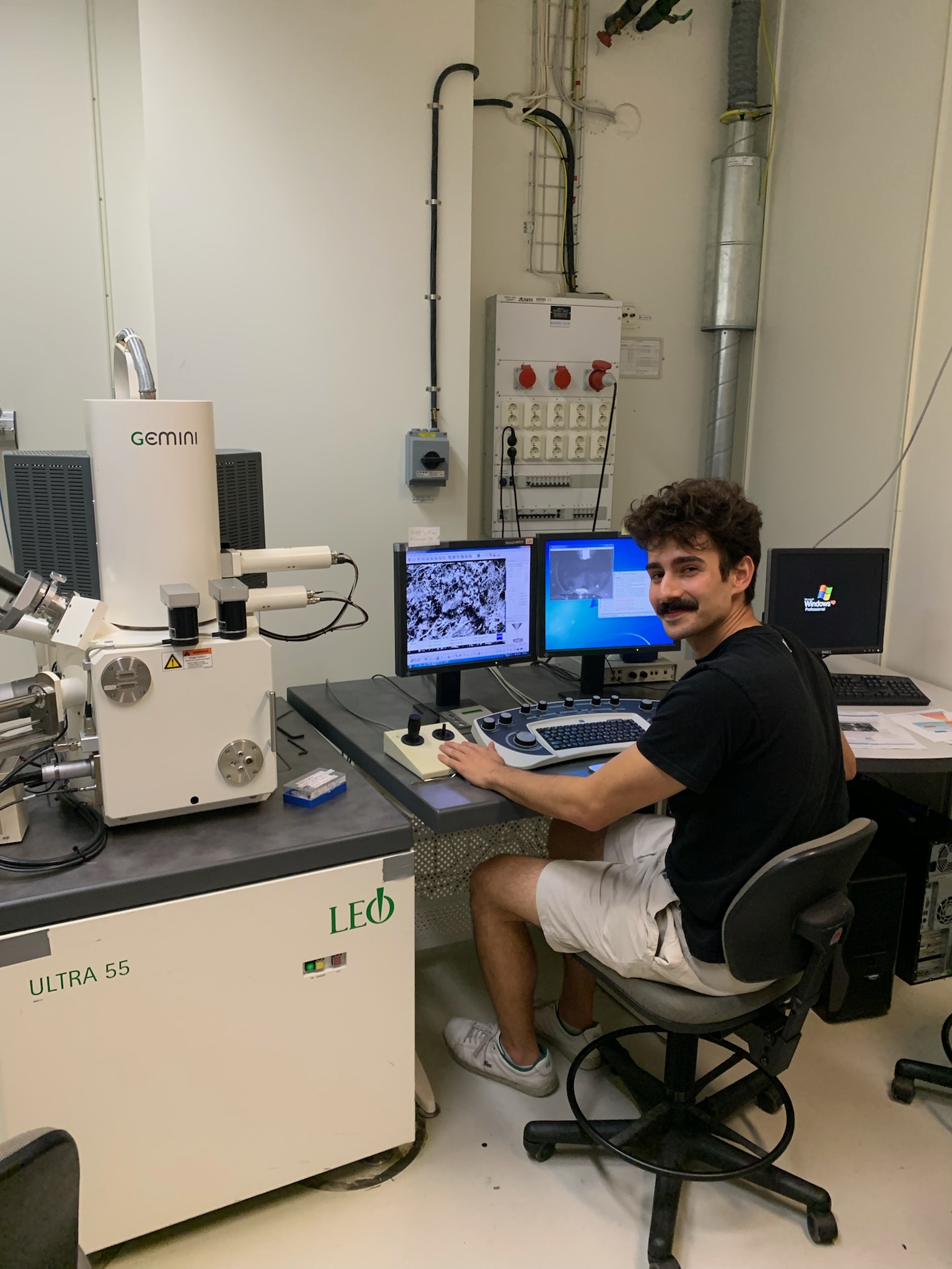
Copper-exchanged chabazite (Cu2+-CHA) zeolite is used for the conversion of NO and NO2 to nitrogen gas in diesel exhaust systems. Hydrothermal aging (HTA) of Cu2+-CHA is known to simulate industrial use via the dealumination of sites within the crystal structure. Imaging of the exchanged copper cations and Cu clusters requires nanoscale resolution and provides insight into the aging process of Cu2+-CHA. This type of imaging is difficult due to the electron beam sensitivity of aluminosilicate zeolites, which is especially challenging in zeolites with low Si/Al. Extended time under the electron beam at the required resolution results in the degradation of the crystalline zeolite framework. We determined the decay rate of crystallinity in fresh Cu2+-CHA using electron diffraction of specimens supported by either graphene or amorphous holey carbon support films at room temperature with 200 keV electrons. Fresh Cu2+-CHA was used due to its higher sensitivity to the electron beam compared to the aged Cu2+-CHA. The relative number of scattered electrons decreases with time and contains information about the structural changes occurring due to the electron beam irradiation. We recorded the intensity of the scattered electrons as a function of time and fit the data to a mono-exponential decay rate. The results show that at a dose rate of ~1850 e-/nm2·s the graphene support film yielded lower decay rate of 0.018 s-1, compared to the holey carbon support film which had a rate of 0.029 s-1. Based on these results, it is clear that a graphene support film significantly extends the stability region for the electron microscopy study of the Cu2+-CHA sample. On-going studies will include the effects of electron energy and specimen temperature.